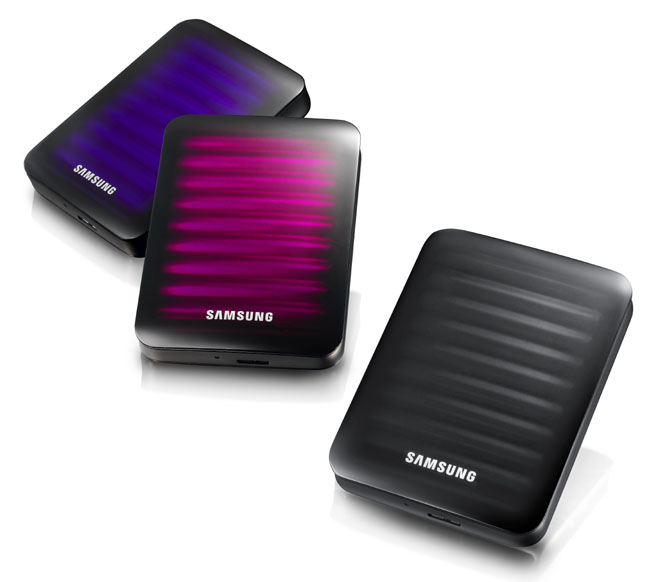South Korean electronics giant Samsung has announced that it has finished development of the industry’s first DDR DRAM memory module, new RAM technology for computer and other devices that the aims to offer twice the performance of existing DDR3 RAM while consuming 40 percent less power—a boon for mobile devices and notebook computers. But, realizing the promise of faster memory in tomorrow’s computers is something of a pie-in-the-sky deal, Samsung also has some here-and-now goodies for today’s computer users: speedy USB 3.0 external hard drives.

First up, the new DDR4 DRAM module has been developed using 30nm process technology can handle data transfer rates of 2.113 Gbps at 1.2 volts. In comparison, DDR3 memory produced using the same 30nm processor only gets a data transfer rate of 1.6 Gbps—that has to run at 1.35 or 1.5 volts. In practice, this will mean notebooks and other systems with DDR4 memory will see a significant performance boost in RAM operations while consuming less power. Samsung says DDR4 memory will be able to support transfer rates up to 3.2 Gbps, compared to top transfer rates of 1.6 Gbps for DDR3 and 800Mbps for DDR2 memory. Samsung has already sent sample 2GB modules to a controller manufacturer, and hopes to have JEDEC standardization of DDR4 technologies completed by the second half of 2011.
The development of DDR4 memory is a bright spot in an otherwise beleaguered RAM market, which has seen steadily falling prices owing to weak demand for PCs and an abundance of manufacturers. Prices for both DDR3 and DDR2 memory hit dropped by about 53 and 45 percent in the last six months, respetively, according to market analysis firm iSuppli.

Not content with the promise of faster memory in the vague future? How about faster storage soon-ish? Samsung has also taken the wraps off three new lines of USB 3.0 external hard drives aimed at everyday computer uers. The drives feature distinctive styling as well as USB 3.0 interfaces that can push data as fast as 5 Gbps&mdash, assuming users have USB 3.0 on their devices—otherwise, they’re limited to USB 2.0 speeds (but at least they work!).
Samsung’s new drives include two new portable external drive offerings—one with a “Scandinavia-inspired styling and a second premium portable line with colorful high-gloss cases. Both portable lines will top out at 1 TB and be available with an optional USB docking station, but the premium drives will sport full-disk 256-bit encryption to protect data in the event drives are lost or stolen, auto backup software, and a “SecretZone” capability to create a secure virtual hard drive. The third entry in the USB hard drive line will be external drives for desktop machines in 1, 1.5, and 2 TB capacities with LED activity indicators.
Samsung says the drives should land at U.S. retailers in April, but the company has not announced any pricing details.

Editors' Recommendations
- DDR5 vs. DDR4 RAM: Is DDR5 worth it?
- AMD may release Intel’s next rival in memory overclocking
- What’s the difference between DDR3 and DDR4 RAM?


